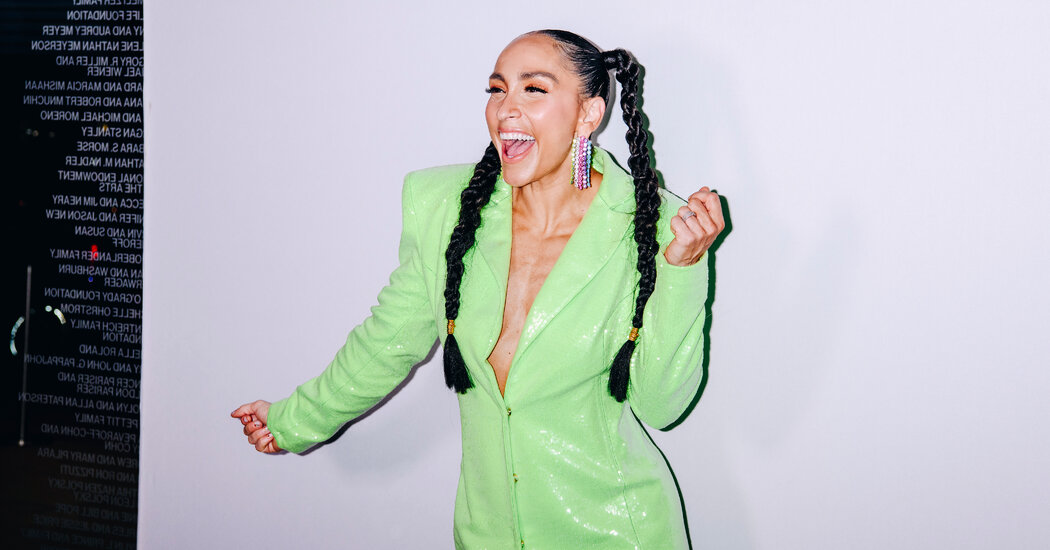
She had already trained for three hours earlier in the day, but that didn’t stop Robin Arzón, the Peloton instructor, from hitting the dance floor Tuesday evening in the cavernous lobby of the Whitney Museum of American Art in Manhattan.
The occasion was the Art Party, the institution’s second-largest annual fund-raiser, thrown by its young patron group. The proceeds from the party go to the Independent Study Program, which supports emerging artists, curators and critics.
In a neon green sequined blazer and braided pigtails, Ms. Arzón and her husband, Drew Butler, his suit a complementary shade of traffic-cone orange, stood out in the crowd, which included the designer Cynthia Rowley and the reality star Olivia Palermo, among other artists, influencers, fashion types and downtown cool kids whose interpretation of the night’s botanical theme tended to the more subdued: floral-print minidresses, black strapless gowns with pin-on blossoms, a crown of blooms here and there.
Upstairs in the eighth-floor gallery, the botanicals were computer-generated. Guests got a preview of “Harold Cohen: AARON,” an exhibit of paintings created using the earliest artificial intelligence art-making program, developed by Cohen at the University of California San Diego in the late 1960s. A live demonstration showcased AARON’s drawing process in action.
If the artistic types at the party were nervous about a robot-controlled future, they weren’t letting on. “I don’t think it has to be scary,” Wes Gordon, the creative director of Carolina Herrera, said. “I’m very hands-on and pencil and scissors and fabric,” he added, but he suspects the technology can “make designers better designers.”






